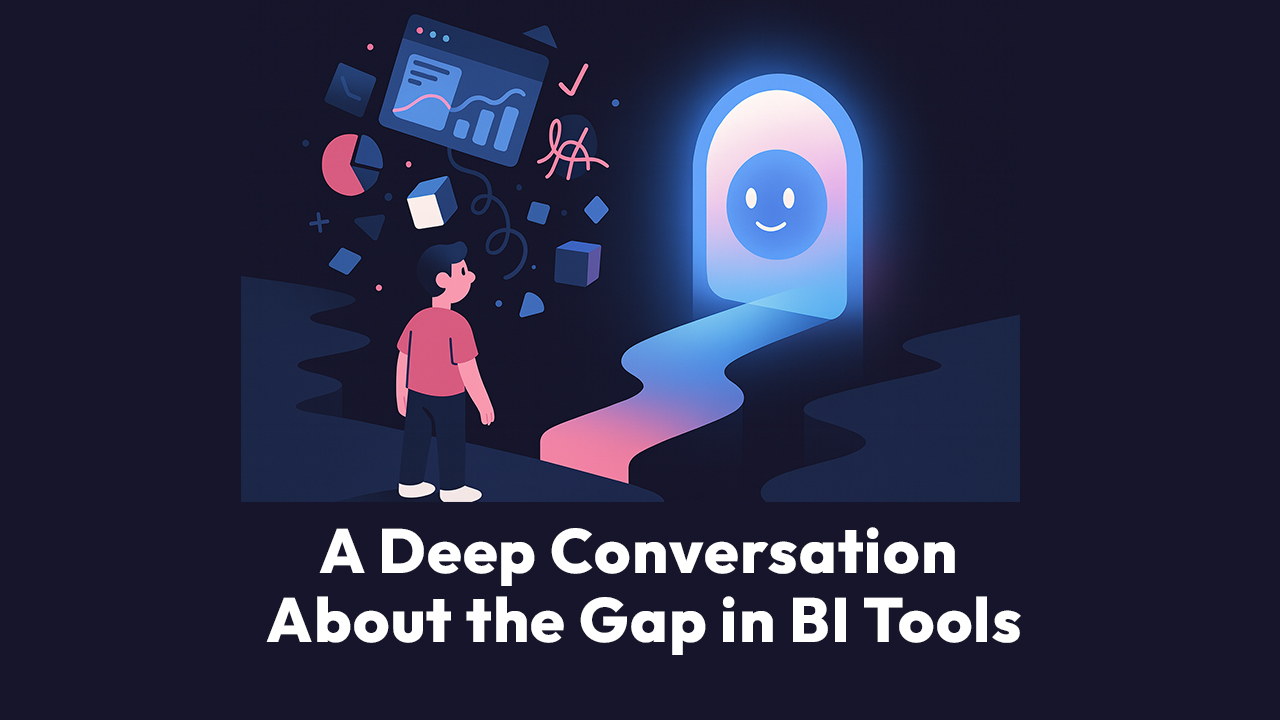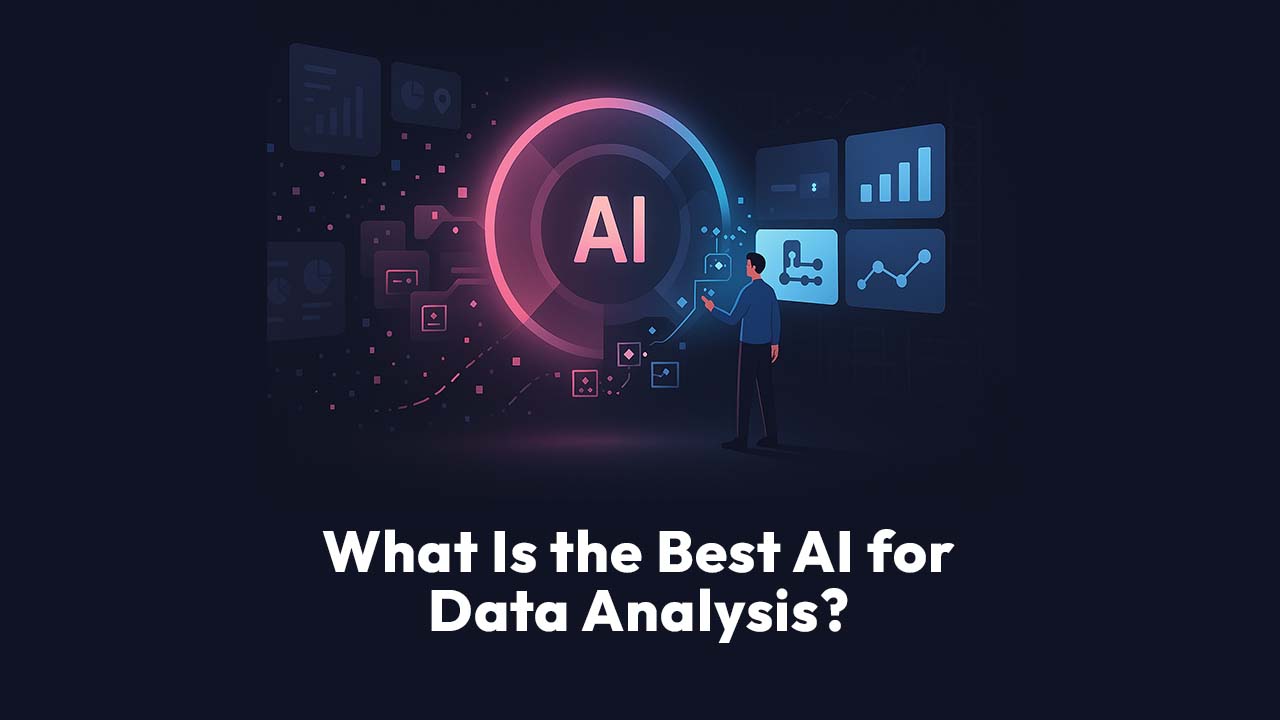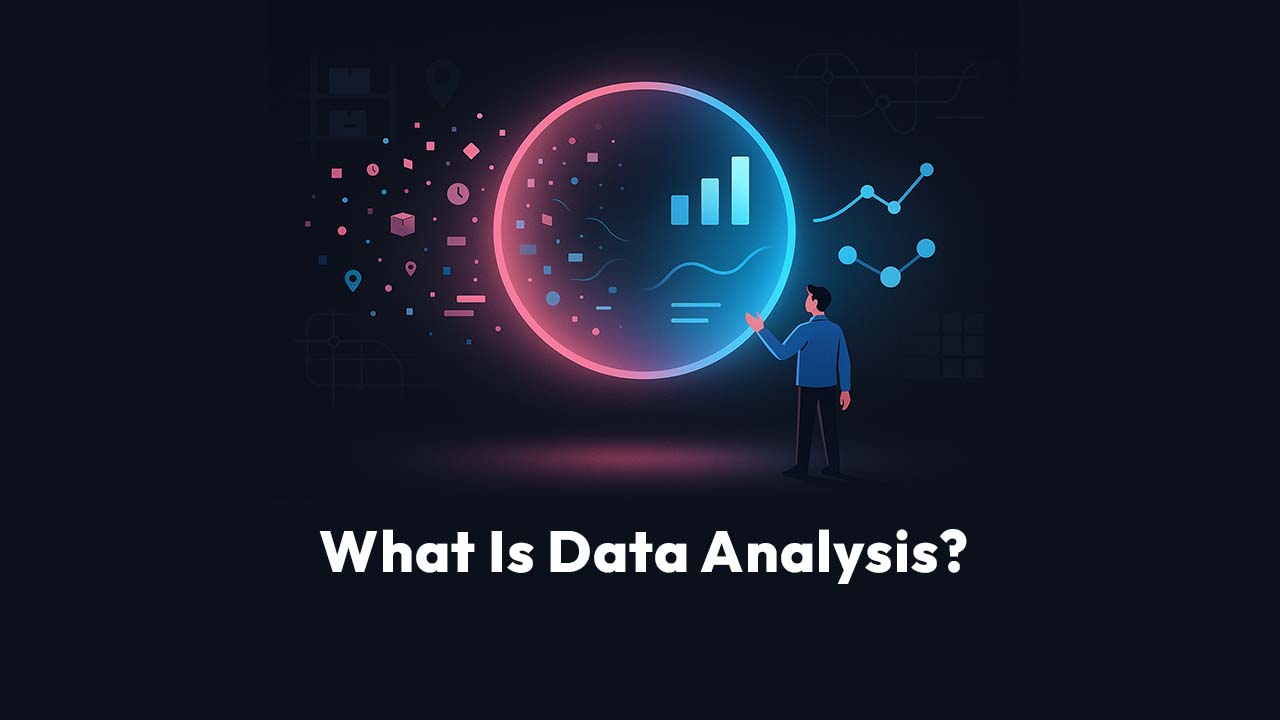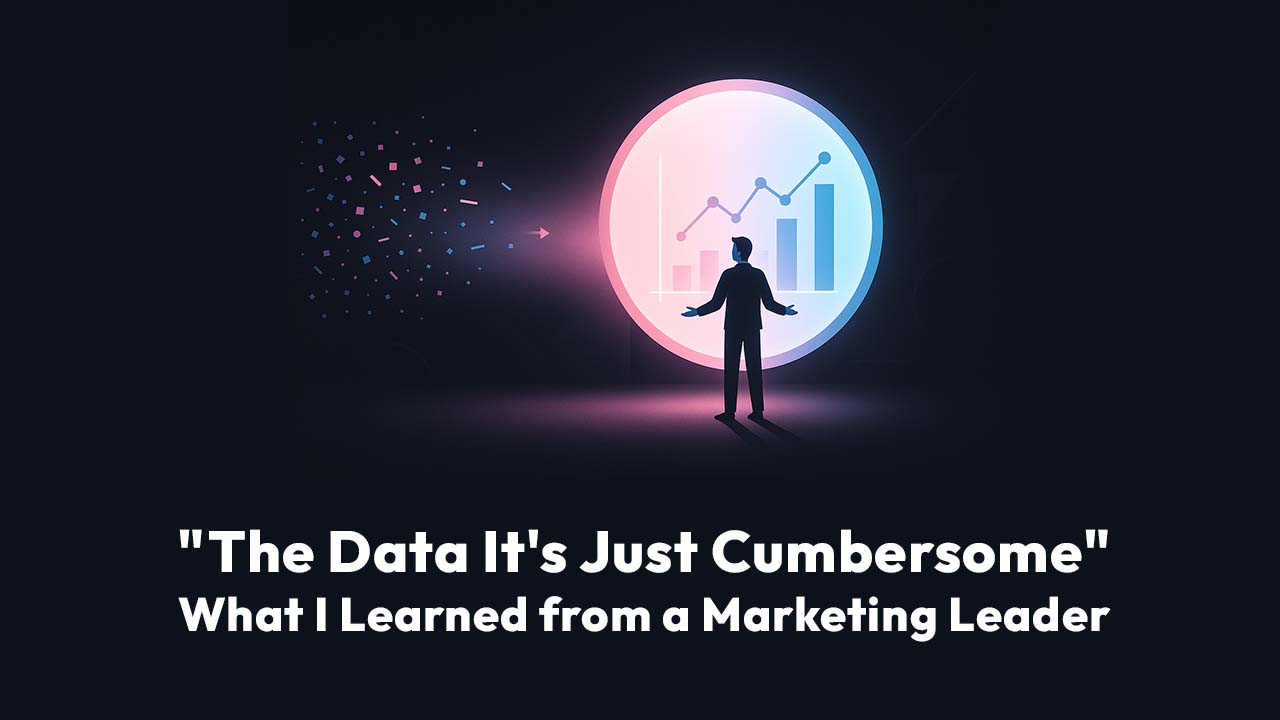"Is There Any Other Way?": What One Startup Founder Revealed About the State of Business Analytics
This week I sat in on a demo with a startup founder launching two B2C ventures in Athens. About halfway through the call, after we'd explained Scoop Analytics' capabilities, he said something that stopped me in my tracks:
"I don't know this realm. I don't know it at all."
He was talking about data analytics—specifically Google Analytics and understanding what's happening with his customers. That one sentence perfectly captured what we're seeing across hundreds of conversations with non-technical founders and business owners who know they need data insights but feel completely overwhelmed by the complexity of getting them.
What Makes a Capable Founder Feel Completely Lost About Their Own Business Data?
Here's the thing that made this conversation so damn illuminating: this wasn't some rookie entrepreneur stumbling through their first venture.
This founder was launching two startups simultaneously. One selling lessons, another selling iPad cases. He was actively expanding his network across the US market from Athens. He clearly understood networking, relationship-building, strategic thinking.
But when it came to understanding his own business data?
Complete darkness.
"In the beginning we will be looking mostly at Google Analytics and things like that, I suppose," he told us. "What's happening if clients are buying, they're not buying, etc."
Notice that word? "Suppose." He wasn't even sure what he'd be looking at. And this is someone who's weeks away from launching revenue-generating products.
Think about that for a second. A smart, capable business owner—someone juggling multiple ventures, international partnerships, and product development—has no idea if his customers are actually buying his products.
How did we get here?
Why Do Business Owners Believe Data Analytics "Isn't Their Field"?
The founder said something else that's been rattling around in my head: "I will have some tech guys that are doing the development. It's their field."
He'd already internalized this idea. Accepted it as fact.
Here's a business owner who will be making critical decisions about pricing, marketing, product development, customer acquisition—all decisions that should be driven by data. But he's already decided that understanding that data isn't his job.
When did we collectively decide this? When did "I want to know if my customers are buying" become a question that requires a technical intermediary?
The founder even asked us directly: "Is there anything else to analyze what is happening in your site? Is there any other way that I can as an investor, as a..."
He trailed off. But the question was crystal clear.
As a business owner. As someone financially invested in these ventures. How else am I supposed to understand my own business?
The Real Cost of the Technical Divide
Let me paint you a picture of what this actually means in practice:
Week 1 after launch: The founder notices some sales coming in. Great! But which product is selling better? Which marketing channel is driving those sales? He doesn't know. He makes a mental note to ask his tech guy.
Week 2: The tech guy is busy fixing bugs. The founder still doesn't know his metrics. He makes decisions based on gut feeling.
Week 3: Finally gets a report. But it's static. Doesn't answer the follow-up questions that immediately come to mind. Needs another report. Back in the queue.
Week 4: Makes a major marketing decision without current data because waiting isn't an option.
Sound familiar?
How Do Traditional BI Tools Actually Solve This Problem? (Spoiler: They Don't)
Later in the conversation, when we explained Scoop's approach, the founder made a comparison that revealed everything:
"So like a Power BI, but even more?"
Even when business owners have heard of traditional BI tools, they instinctively understand these tools aren't for them.
And they're right.
Power BI, Tableau, Looker—these are powerful tools. Genuinely impressive technology. But they were built for data analysts and technical teams. Period.
Here's what using traditional BI actually looks like:
- Setup requires technical expertise (connecting data sources, building schemas, creating relationships)
- Building reports requires technical knowledge (DAX formulas, calculated fields, proper aggregations)
- Asking follow-up questions requires building new reports (back to step 2)
- Maintenance requires ongoing technical resources (things break, data changes, updates needed)
For a founder juggling product development, manufacturing partnerships, network expansion, and app launches?
Learning Power BI simply isn't going to happen.
So instead, they accept being in the dark. Or they become entirely dependent on technical team members to translate their business questions into data answers.
Neither option is good enough.
What Happens When You Ask If Setup Is "Easy"?
When we explained that Scoop could be set up with minimal technical expertise, watch what happened:
"So it's very small, very little time to set it up. And it's very small effort, if you are a little bit technical guy, right?"
Even after hearing about simplified setup, he was still mentally categorizing this as something for "technical guys."
The assumption runs that deep.
I've seen this pattern dozens of times now. We tell people setup is simple. We show them it's simple. We walk them through it. And they still can't quite believe that understanding their business data doesn't require technical expertise.
That's not skepticism. That's trauma.
They've been burned before by tools that promised simplicity and delivered complexity. They've watched hours disappear into setup processes that went nowhere. They've felt stupid asking questions that should be simple.
So they protect themselves by assuming analytics just isn't for them.
What Business Owners Actually Need (But Can't Get from Traditional Tools)
Here's what this founder needed—and what every non-technical business owner needs:
The gap isn't just frustrating. It's expensive.
Every day a founder spends without understanding their metrics is a day of decisions made blind. Marketing dollars spent without knowing ROI. Product decisions made without customer feedback. Inventory choices made without demand data.
The cost compounds.
How Do You Know If You're Making Decisions in the Dark?
Ask yourself these questions:
- Do you wait days or weeks to get answers to simple business questions?
- Have you made a significant business decision in the last month based primarily on gut feeling?
- Do you know your best-performing product/service/channel right now? (Not last quarter—right now)
- Can you explain why your sales went up or down last week?
- Do you avoid asking data questions because the process is too complicated?
If you answered yes to any of these, you're not alone.
We've spoken with hundreds of business owners. The pattern is consistent: smart people making decisions without the data they need because accessing that data is too hard.
What Changed During This Conversation?
The transformation came when we explained he could literally just ask questions in Slack and get answers.
"You can just upload data into Slack and Scoop will just read it," we told him.
It wasn't excitement about features or capabilities.
It was relief.
Relief at the possibility that understanding his business data might actually be accessible to him. That maybe analytics didn't have to be "someone else's field."
When we mentioned connecting to Google Analytics—one of Scoop's 100+ native integrations—and simply asking "what happened last week?" something shifted in his voice. The conversation moved from "this is for tech people" to "I'll send this to my tech guy to do a trial run and see what comes up."
He was willing to explore the possibility.
That's the moment I'm watching for in every conversation now. That shift from resignation to possibility. From "I don't know this realm" to "maybe I could."
Why This Matters More Than One Founder's Experience
This isn't just about one startup founder in Athens.
Here's what we're seeing across the market:
- 73% of small business owners report making decisions without adequate data (not because they don't want data—because accessing it is too hard)
- The average time to build a single BI report in traditional tools is 4-6 hours
- Most BI implementations fail within the first year because they're too complex to maintain
The traditional model is broken: Business questions → Technical translation → Report building → Business interpretation
It's too slow. Too expensive. Too limiting for today's pace.
What Does a Platform Built for Business Users Actually Look Like?
Here's what's different about Scoop's approach:
Natural Language Interface That Actually Works
This founder mentioned his development team uses Slack. Perfect. With Scoop for Slack, he could literally ask:
"Which iPad case color sold best last week?"
And get an immediate answer. Not a dashboard to interpret. Not a report to request. An answer.
Follow-up question? "Show me sales by color for the last 30 days."
Instant visualization. Right in Slack.
Want to share with his team? One click. The entire conversation and all the data becomes visible to the channel.
Spreadsheet Skills Instead of SQL
The founder knows Excel. Most business owners do.
Scoop includes a complete in-memory spreadsheet calculation engine with 150+ Excel functions. That means if you know how to use VLOOKUP, SUMIFS, or INDEX/MATCH in Excel, you can transform enterprise-scale data in Scoop.
No SQL required. No data engineering team. Just the spreadsheet skills you already have, applied to millions of rows of data.
This is something NO other platform has. Not Tableau. Not Power BI. Not Looker.
Traditional BI tools might look like spreadsheets, but try using an actual Excel formula to transform your data. You can't. With Scoop, you can stream millions of rows through familiar spreadsheet formulas.
AI That Explains, Not Just Analyzes
But here's where it gets really interesting for a founder launching new products.
Let's say he uploads his first month of transaction data to Scoop. He could ask: "What patterns do you see in my customer data?"
Scoop's three-layer AI data scientist goes to work:
Behind the scenes:
- Automatically cleans the data, handles missing values
- Runs sophisticated machine learning (J48 decision trees, EM clustering—the same algorithms PhD data scientists use)
- Generates complex models that might have 800+ decision nodes
What the founder sees: "High-value customers have three key characteristics:
- Purchase timing: Buy within 24 hours of first visit (89% accuracy)
- Product preference: Start with lessons, then buy cases (shared pattern)
- Price sensitivity: Don't use discount codes but have higher cart values
Priority action: Email the 23 customers who bought lessons in the last week about your premium iPad cases."
That's not a simple rule. That's sophisticated machine learning explained in business language.
Most platforms give you either simple rules (not real ML) or complex ML outputs you can't understand (800-node decision trees). Scoop runs the sophisticated ML and translates it into actionable insights.
What Questions Should Every Business Owner Be Able to Answer Right Now?
If you're running a business, you should be able to answer these questions in under 60 seconds:
- What drove my sales increase/decrease this week?
- Which marketing channel is delivering the best ROI?
- What's my customer acquisition cost by channel?
- Which products are trending up or down?
- Where am I losing customers in my funnel?
- What's my current cash runway?
- Which customer segment is most profitable?
Not next week. Not after your analyst builds a report.
Right now.
If you can't, you're making decisions in the dark. And in today's market, that's a luxury you can't afford.
How Fast Can You Actually Get From Question to Answer?
With Scoop:
Traditional approach:
- Business owner has question
- Emails tech team
- Waits for availability
- Question gets translated
- Report gets built
- Waits for delivery
- Gets answer (maybe)
- Has follow-up question
- Repeat process
Timeline: Days to weeks
Scoop approach:
- Ask question in Slack or web interface
- Get answer with visualization
- Ask follow-up question
- Get answer with deeper analysis
- Export to PowerPoint if needed
- Make decision based on current data
Timeline: Seconds to minutes
The difference isn't just speed. It's agency.
What Real Business Impact Does This Create?
I'm genuinely curious what happens when this founder's technical team member, Mario, tries Scoop.
Will he see it as just another analytics tool? Or will he recognize it as something that could actually empower the business owner to get his own answers?
More importantly, what happens when the founder can actually see his business data in real-time?
Scenario 1: iPad Case Launch
Instead of waiting weeks to understand which colors are selling, he could ask daily: "How are sales trending by color?" Adjust inventory immediately. Double down on popular colors. Discontinue slow movers before they become dead stock.
Scenario 2: Lesson Platform
"Which lesson topics have the highest completion rates?" Get instant analysis. Identify what's working. Create more of it. Fix or eliminate what's not. All without technical intermediaries.
Scenario 3: Cross-Selling
"Do customers who buy lessons also buy iPad cases?" Scoop's ML could discover: "Yes, 67% of lesson buyers purchase cases within 30 days, but only if they complete at least 3 lessons first."
That's actionable. Create a targeted email campaign. Time it perfectly. Increase revenue per customer.
These aren't theoretical examples. This is what Scoop customers discover every day—patterns they never would have found manually because the human brain can't process multiple dimensions simultaneously the way machine learning can.
Why "I Don't Know This Realm" Shouldn't Be Your Answer Anymore
That founder's confession—"I don't know this realm at all"—stuck with me because it represents a massive market failure.
Understanding your business data shouldn't require technical expertise.
It should require curiosity, business acumen, and the right tools to support both.
The tools are finally catching up to what business owners actually need:
- AI-powered analytics that understand business questions
- Platforms that speak your language (literally—natural language processing that works)
- Spreadsheet skills at enterprise scale (use Excel formulas on millions of rows)
- Machine learning that explains itself (sophisticated analysis in plain English)
- Slack integration for analytics where you already work
- Instant deployment (minutes, not months)
Based on conversations like this one, we're just scratching the surface of how many business owners are ready for that shift.
The question isn't whether you need better access to your data.
The question is: how much longer can you afford to make decisions without it?
How Can You Stop Making Decisions in the Dark?
Here's what getting started with Scoop actually looks like:
Week 1: Connect and Explore
- Link your data sources (Google Analytics, Shopify, Salesforce, whatever you use)
- Upload any CSV files you have
- Ask your first question in plain English
- Get your first insight
Week 2: Discover Patterns
- Use Scoop's AI to find hidden segments in your customer data
- Identify what's actually driving your business (vs. what you think is driving it)
- Share insights with your team via Slack
Week 3: Deploy Intelligence
- Set up automated alerts for key metrics
- Create dashboards that update in real-time
- Start making data-driven decisions daily
Week 4: Measure Impact
- Track the decisions you made differently because of data
- Calculate ROI on campaigns you optimized
- Identify revenue you would have missed
The typical Scoop customer sees:
- 40% increase in marketing ROI through better targeting
- 25% reduction in customer churn through early detection
- 87% of insights they "never would have found manually"
- 10x faster analytics velocity vs. traditional methods
FAQ:
What is the fastest way to understand my Google Analytics data without learning a new platform?
Connect Google Analytics to Scoop (one of 100+ native integrations) and ask questions in plain English via Slack or the web interface: "What drove traffic last week?" or "Which channels convert best?" You get immediate answers with visualizations, not raw data dumps. No training required—if you can ask a question, you can use Scoop. Most users get their first insight within 30 seconds of connecting their data.
How is Scoop different from Power BI or Tableau if they both do business intelligence?
Three critical differences: (1) Scoop includes a complete spreadsheet calculation engine—use VLOOKUP, SUMIFS, and INDEX/MATCH on millions of rows without SQL (no competitor has this). (2) Scoop's three-layer AI runs PhD-level machine learning but explains it in business language—you get sophisticated analysis without technical jargon. (3) Natural language interface—ask questions conversationally instead of building reports. Traditional BI tools were built for data analysts. Scoop was built for business owners.
Can I really do data science without knowing how to code?
Yes, because Scoop does the technical work automatically. When you ask "What patterns exist in my customer data?" Scoop's AI automatically cleans your data, runs machine learning algorithms (the same ones data scientists use), and translates complex results into plain English recommendations. You get insights like "High-value customers share these 3 traits" instead of 800-node decision trees. The data science happens—you just don't need to understand the mechanics.
How long does it actually take to set up Scoop for a small business?
Five minutes to connect your first data source. Thirty seconds to ask your first question and get an answer. For Slack integration, it's literally clicking "Add to Slack" and uploading a CSV file—instant analysis. No data warehouse setup, no IT team involvement, no complex configuration. Upload data, ask questions, get insights. The barrier to entry is intentionally zero.
What if I'm not technical but my data is messy or incomplete?
Scoop's AI automatically handles data quality issues. It detects missing values, identifies outliers, normalizes inconsistent formats, and cleans messy data before analysis. You don't need to manually prepare data—the system does it invisibly. When you ask a question, Scoop processes your data through automatic preparation, runs the analysis, and gives you clean insights. The messiness happens behind the scenes; you just see results.
How do I know if Scoop will work with my specific business tools?
Scoop connects to 100+ data sources including Google Analytics, Salesforce, HubSpot, Shopify, JIRA, MySQL, PostgreSQL, Snowflake, and more. If your data lives in a CSV, Excel file, database, or major SaaS platform, Scoop can connect to it. For custom integrations, Scoop supports REST, GraphQL, and SOAP APIs. Start with one data source—most users begin with Google Analytics or a simple CSV—and expand from there.








.png)